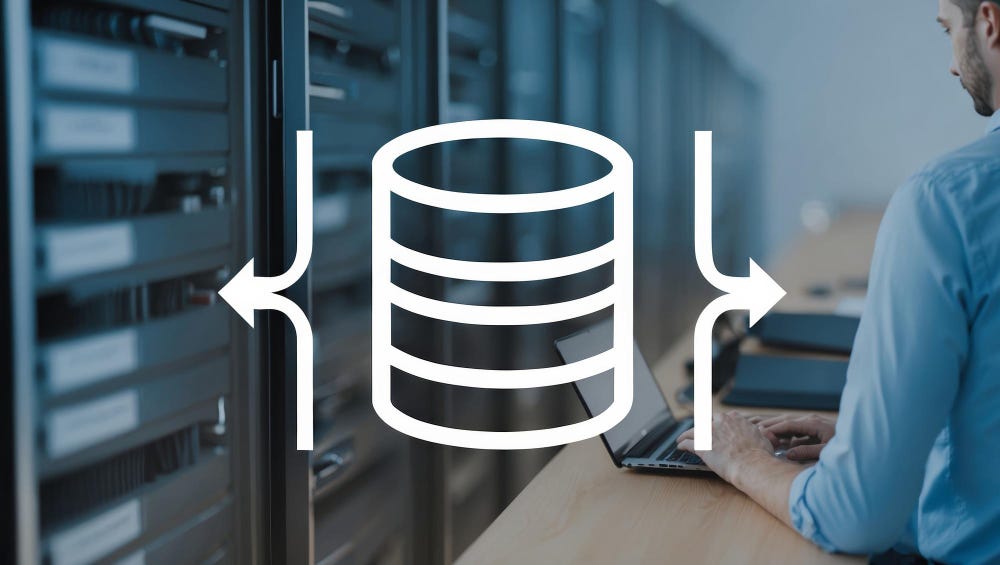Legacy Data Migration: A Practical Roadmap for 2025
Lessons, pitfalls and proven steps for moving critical data to modern platforms
Old platforms rarely fail in one dramatic moment. Instead, they chip away at budgets through soaring licence fees, fragile integrations and overnight report runs that finish at midday. Every manual workaround hides a little more risk; think missing compliance flags or client updates stuck in a batch queue.
A well-planned migration turns that slow leak into a measurable win. Map high-value data first, fix quality issues at the source and automate each load step; the payoff is faster reporting, lower cloud spend and freedom to roll out AI-driven services.I guide teams through that shift, linking business goals to technical design and keeping downtime to a minimum.
When Migration Becomes Urgent
New projects often expose the limits of ageing tech. Three scenarios push the timeline from “sometime soon” to “right now”:
Green-field platform launches
Starting fresh in the cloud is hard if customer data lives on a 90s database. Migrating early lets product teams design clean APIs and skip costly workarounds.
Real-time reporting demand
Board dashboards that refresh once a day are no help during a price swing or supply-chain hiccup. Streaming data pipelines rely on modern schemas and elastic storage—neither play well with legacy batch jobs.
AI and digital-twin workloads
Machine-learning models thrive on tidy, well-labelled records. Digital twins need millisecond updates. Feeding either from a monolith slows training, inflates compute bills and risks poor predictions.
If any of these initiatives sit on your roadmap, a phased migration is not a nice-to-have. It is the blocker removed, budget freed and delivery risk trimmed in one move.
Four Core Challenge Zones
Planning & Scope
Choosing between a big-bang cut-over and a staged trickle guides every other decision. Build effort estimates around real test runs, not whiteboard guesses, and ring-fence budget for inevitable scope tweaks when hidden dependencies appear.
Knowledge Gaps
Staff turnover and dusty code blur the original business logic. Capture what remains through workshops, legacy system screen-shares and log analysis. Document every rule in a shared repo so newcomers are not blocked by tribal memory.
Data Quality
Load poor records and the new platform will inherit every headache. Profile the source early, tag errors, then push fixes back to operational teams instead of patching downstream. Clean at origin once, rather than cleansing in flight forever.
Execution & Reporting
Go-live needs more than cron jobs. Set up “hyper-care” shifts for quick triage, surface run stats on clear dashboards and agree sign-off criteria with business owners before the first row moves. Confidence builds when progress is visible in real time.
Data Quality Tactics
Continuous validation
Insert rule checks at every hand-off. Validate on read, after each transform and before any load. Fail fast on critical errors so fixes happen while the team still has the code in focus.
Anonymised production samples
Synthetic data rarely covers edge cases. Pull a statistically significant slice of real records, mask personal fields and run that through development pipelines. Developers see true complexity without exposing sensitive details.
Regression quality tests
Store every validation metric from each run. Track trends in error counts, missing values and referential breaks. If a new rule or schema tweak makes quality slide, alerts fire before bad data reaches business users.
Mapping and Automation
Shift from spreadsheets to smart catalogues
Old-school Excel specs become brittle the moment columns shift. A modern data-catalogue holds every table, field and relationship in one governed hub. Business owners update rules centrally, pipelines pull the latest metadata on demand and nobody hunts for “v3-final-final.xlsx”.
Generate code, not copy-paste
With metadata stored as machine-readable JSON, build scripts to emit SQL DDL, ELT jobs or API calls straight from the catalogue. One source of truth drives every environment, so QA, staging and prod stay in lock-step.
Deliver entity by entity in two-week bursts
Map one domain, write tests, run a mini-cut-over, then demo the result to stakeholders. Agile sprints keep risks contained, let busy SMEs review smaller chunks and surface hidden business rules early.
Automate the feedback loop
Each pipeline run writes back row counts, error tallies and performance stats to the catalogue. Product owners see real-time health scores alongside their data definitions and can raise fixes before users notice a glitch.
Case Snapshot: Telco CRM Overhaul
A national carrier needed to retire a home-grown CRM from the 1990s and land six million subscribers in a cloud platform. We split the journey into two clear steps. First, we moved a pocket of legacy consumer records into the existing on-prem system to stabilise billing and customer care. Next, we tackled the large-scale lift to the SaaS destination.
The team started with the toughest cohort: enterprise accounts holding dozens of voice, data and IoT services. By proving the edge cases early we revealed hidden business rules, adjusted mappings and avoided late-stage rework. In parallel, a data-quality squad profiled source tables, fixed reference codes and validated email and address fields. Cleansing ran continuously so every dry-run landed cleaner than the last.
Mid-project, leadership expanded scope to include two ancillary ordering systems. Because we were sprinting entity by entity and storing rules in a data catalogue, the extra feeds slotted in without rewriting the entire pipeline. The lesson: flexible design and frequent demos turn executive “what-ifs” into manageable change, not project derailers.
Tooling that Scales
Selecting the right platform decides whether a migration feels routine or never-ending. I favour automation suites that let engineers model, test and deploy pipelines from a single workspace rather than juggling scripts and manual hand-offs.
Why an automation platform saves weeks
Reusable components
Connectors, transforms and data-quality checks can be packaged once and re-applied across entities and phases.
Parallel execution
Cluster-aware runtimes slice large tables or file sets into shards, lifting throughput without home-grown scheduling.
Embedded validation
Rules run inside the pipeline so errors surface immediately, not during downstream reconciliation.
API-first matters
Modern migration landscapes rarely live in isolation. An API-centric engine means you can:
Trigger migration runs from CI/CD or service-management workflows.
Push progress metrics straight into Grafana, Power BI or Slack for real-time visibility.
Spin up or tear down cloud workers on demand to manage cost.
With the plumbing handled by an integration-ready platform, project effort shifts from writing glue code to refining business rules. That focus is where true speed and quality gains appear.
How Can I Accelerate Migration
Model-fit workshops
I start every engagement with a rapid-fire session that maps business goals to data realities. In two days we surface hidden dependencies, pick the right migration pattern and sketch the critical path.
Reference architectures
My library of proven blueprints covers cloud SQL, NoSQL, streaming layers and CDC pipelines. Teams avoid blank-page syndrome and get a running frame that meets audit, security and performance benchmarks from day one.
Hyper-care launch support
Cut-over week is never a guess. I place senior engineers on 24 × 7 watch, runs live data-quality dashboards and owns the rollback plan so your stakeholders stay calm and informed.
Conclusion
Legacy platforms drain budgets and throttle innovation. A structured migration replaces that drag with clean data, faster analytics and readiness for AI workloads.
Ready to move? Message me if that sounds like what your team needs.



